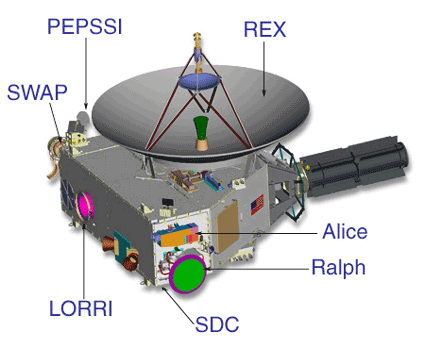Today's guest blog post is by Featured Science Author Dr. Fred Bortz
Tune in Thursday, June 13th on our Facebook page at 10 am EST to discuss this post with Dr. Bortz!
More than ten years after it was posted at the "Ask Dr. Fred" page "Why Isn't Pluto a Planet Anymore?" remains by far the most popular page at "Dr. Fred's Place" on the web, getting anywhere between 50 and 100 hits on a typical day.
That's a lot of interest in an icy world that is smaller than the moon and so far away that sunlight takes at least 4 hours to reach it! What could possibly be so fascinating?
The reason, of course, is Pluto's history. When Clyde Tombaugh first discovered it in 1930, it seemed to solve a mystery. Uranus and Neptune didn't quite follow the orbits expected due to the gravitational pull of the Sun and the other planets, mainly Jupiter and Saturn. The best explanation was that an unknown planet about the size of Earth was orbiting in that far distant part of the Solar System.
But the more scientists studied Pluto, the smaller they measured it to be. In 1978, astronomer James W. Christy discovered that images of Pluto sometimes seemed to be elongated in one direction or another. After careful study, he concluded that Pluto had a moon, and he proposed the name Charon. By measuring the size and period of Charon's orbit, scientists were finally able to calculate Pluto's mass, and it was much too small to explain the mystery of Uranus's and Neptune's orbits.
That mystery was finally solved in the mid 1980s when two Voyager Spacecraft visited Jupiter and Saturn. (Voyager 2 went on to Uranus and Neptune, but Pluto was at the wrong position of its orbit for the spacecraft to reach it.) The effect of the gravity of those giant worlds on the Voyagers' trajectories was slightly different than expected, which gave astronomers a more accurate and slightly different measurement of their masses. That changed the expected orbits of Uranus and Neptune to match observations without needing such a large planet farther out.
So what kind of a body was Pluto? The best explanation came from a suggestion in a 1951 paper by Gerard Kuiper, who was studying how the solar system formed. He wrote that in the early solar system, a belt of orbiting icy bodies (now named the Kuiper Belt) would have formed at about Pluto's distance. Since he thought Pluto was much larger than it is, he calculated that it would be almost alone in its orbital region, having swept up other smaller bodies or sent them flying out of the belt.
Once scientists realized that Pluto was as small as it is, they also realized that there should be many more Kuiper Belt objects (KBOs), and they started looking for and discovering a few in the 1990s. In 2002, they found one half Pluto's size and named it Quaoar. Then in 2005 they found the KBO now known as Eris, which was first thought to be larger than Pluto but is now thought to be comparable in size.
In August 2006, the International Astronomical Union (IAU) realized they needed a better definition of planet. Some members argued that the definition should include large KBOs and the largest asteroids, since their geology resembled the major planets in many significant ways. But on August 24, they settled on a decision that "demoted" Pluto and included those other large KBOs and asteroids in a class called dwarf planets.
Some people still argue about that definition, but no matter what we call Pluto will not change our reason to be interested in it and the rest of the Kuiper Belt. In fact, a few months before the IAU changed Pluto's category, NASA launched the New Horizons mission toward Pluto and the Kuiper Belt.
In late December 2014 or early January 2015, New Horizons will send its first images of Pluto, Charon, and the other moons in the Pluto system. (Two other moons are named Hydra and Nix. Two more are currently designated P4 and P5 but will have names soon. And astronomers are speculating that there may be as many as ten more.) We'll know much more soon after July 14, 2015, when New Horizons will make its closest approach to the Pluto system. Then the spacecraft will head off toward another target in the Kuiper Belt that is yet to be chosen.
Stay tuned. Pluto and the Kuiper Belt will be in the spotlight for many years to come!
Discover more about the New Horizons mission here.
Follow the news about the New Horizons Mission and other interesting science at Dr. Fred's SciFact Central page on Facebook.
Young readers might also enjoy the chapter on the New Horizons Mission in Dr. Fred's 2011 book Seven Wonders of Space Technology . And readers of all ages will be delighted by Neil deGrasse Tyson's book about the status of Pluto called The Pluto Files: The Rise and Fall of America's Favorite Planet.
Tune in Thursday, June 13th on our Facebook page at 10 am EST to discuss this post with Dr. Bortz!
